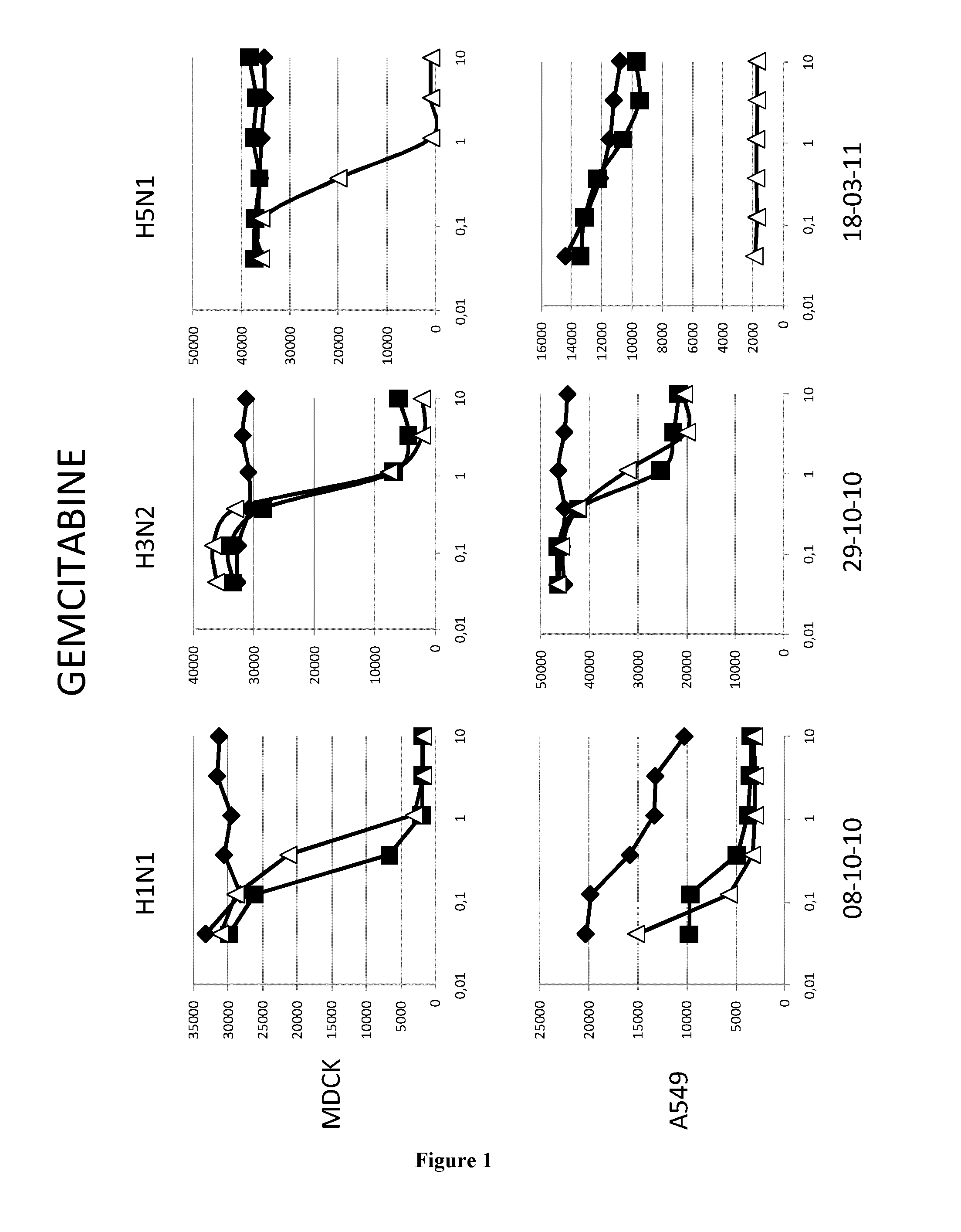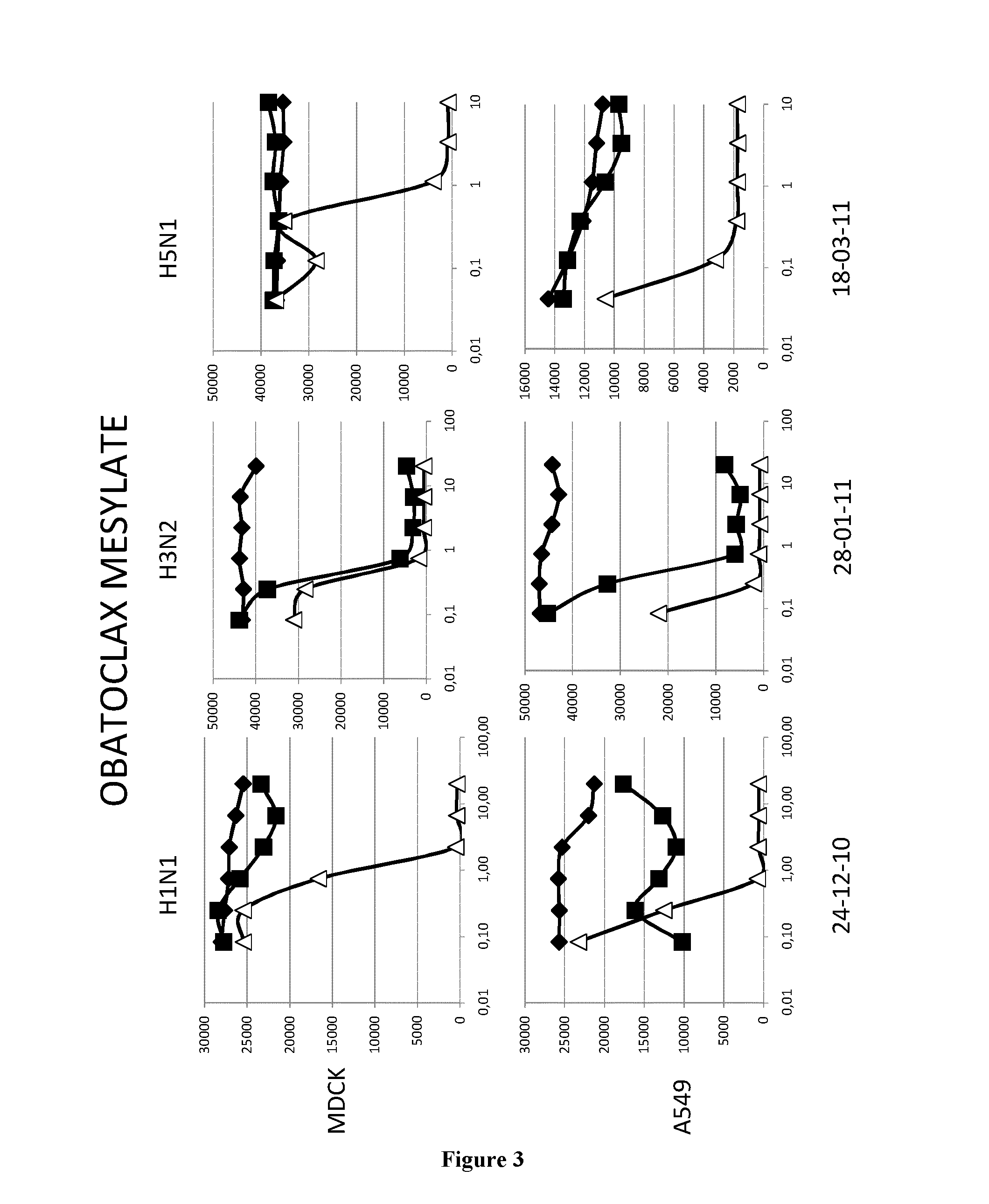Methods and pharmaceutical compositions for inhibiting influenza viruses replication
- Summary
- Abstract
- Description
- Claims
- Application Information
AI Technical Summary
Benefits of technology
Problems solved by technology
Method used
Image
Examples
example
Material & Methods
Cells and Virus
[0068]The A549 human lung epithelial cells line and the Madin-Darby canine kidney cells (ECACC,) were grown in DMEM media (GibCo, 41966052) supplemented with 100 U.ml penicilline / streptomycin (GibCo, 15140130) and 10% fetal calf serum (PAN, 3302-P221126) at 37° C. and 5%CO2.
[0069]The epidemic A / H1N1 / New Caledonia / P10, A / H3N2 / Wyoming and A / H5N1 / Vietnam strains were propagated in MDCK cells in DMEM supplemented with 1 μg.ml−1 modified trypsin TPCK (Sigma, T3053) in absence of FCS. Virus stocks were titrated by standard plaque assay on MDCK cells using an agar overlay medium.
Molecules
[0070]All the molecules were solubilized in DMSO at a stock concentration of 20 mM.
Virus Infection
[0071]Cells (MDCK or A549) were washed twice with D-PBS 1X (GibCo, 14190). Molecules were added at indicated concentrations. MDCK and A549 cells were then infected with H1N1 (respectively MOI 0.01 and 0.1), with H3N2 (MOI 0.6) or with H5N1 (respectively MOI 0.001 and 0.01) in D...
PUM
 Login to View More
Login to View More Abstract
Description
Claims
Application Information
 Login to View More
Login to View More - R&D
- Intellectual Property
- Life Sciences
- Materials
- Tech Scout
- Unparalleled Data Quality
- Higher Quality Content
- 60% Fewer Hallucinations
Browse by: Latest US Patents, China's latest patents, Technical Efficacy Thesaurus, Application Domain, Technology Topic, Popular Technical Reports.
© 2025 PatSnap. All rights reserved.Legal|Privacy policy|Modern Slavery Act Transparency Statement|Sitemap|About US| Contact US: help@patsnap.com



